- Home
- Patricia Cornwell
Ruth, a Portrait: The Story of Ruth Bell Graham Page 4
Ruth, a Portrait: The Story of Ruth Bell Graham Read online
Page 4
“I have worked here many years,” the gateman would blandly reply, “and never heard anything about an attic.”
Other missionaries were not so fortunate. Addison and Katherine Talbot discovered that all of their belongings had either been stolen or destroyed. Soldiers uprooted rosebushes and shrubbery in search of buried valuables, until the once opulent yard looked as if a giant mole had gone on a burrowing spree.
After several weeks of repolishing floors and whitewashing walls, the Bells’ home was restored. Once again it was filled with the smells of baking bread and bubbling molasses candy and the sounds of the family singing hymns, accompanied by Mrs. Bell on the piano. Dr. Bell continued his hospital duties, and his wife worked in the women’s clinic, recording names and symptoms before patients saw the doctors. She taught her daughters to read and write, and when the occasional missionary barrel of secondhand clothing was shipped over from the United States, she rummaged through it with gusto and set about ripping and reshaping fusty old-fashioned garments into dresses and suits.
In this setting Ruth began to define her world. Family was a buffer, a refuge. Beyond it, on the other side of the compound wall, was nothing but suffering and death. In this setting she began to discover her tastes. She admired the delicate beauty of the Orientals with their almond eyes, ebony hair, and graceful manner. She felt awkward and unattractive by comparison. Beauty was the fresh flowers and ancient edifices that sprang from the earth, or seemed to.
Ruth admired rich red lacquers made of pig’s blood, and leathers, silks, satins, and the ornate calligraphy that she one day would pen. Wood was rare and old, and worn smooth, and she would always prefer flooring that had known a crowd and furniture that could tell a story. Ruth Bell would have been content to remain happily safe in her imaginative, warm little world, but the realities beyond the wall began to intrude.
3
CHAPTER
The Year of the Horse
RUTH THE ARTIST, AGE 8
With children nestled close, parents warily eyed armed soldiers loitering on deck, “waiting for the first bullet to be shot ”
—Dr. Nelson Bell, 1930
It was the summer of 1930, the year of the horse, which in Chinese mythology symbolizes wisdom. In the Qingjiang marketplace the pungent odor of ripe, raw meats and vegetables mingled with the savory smells of frying fish, cabbage, and garlic. Merchants hawked wares, and donkeys burdened with sacks of rice, pottery, and reeds clattered skittishly in the choked, narrow street. Peasants moved in a noisy throng, while beggars crusty with filth and disease watched slyly from the borders, like blackbirds along a fence, waiting for their next chance to extort a coin.
Nelson Bell had removed the isinglass flaps from his black Austin Healey before driving his family to town. The foreign car and its foreign devil driver crept ahead in a series of stops and starts, an ideal target for the wispy Chinese boy just yards from the driver’s open window. The boy launched a mouthful of spit as the car lurched forward, and Ruth, perched innocently in the backseat, was splattered on her rosy right cheek. Horrified, she watched her father jam on the brake and spring from the car like a rabbit, the perpetrator darting through the crowd, his Western nemesis bounding after him. Snatched midflight, the boy was spanked soundly, in a rare moment when a missionary experienced justice, small though it was.
Misfortunes, injustices, and tragedies had struck the missionaries prior to 1930. But a flurry of shocks, seemingly random in their cruelty, would blow through the Bells’ world as never before. Ruth, now ten, was old enough to understand each one in all its harsh detail.
The first shock was Gay and Ed Currie’s second loss. Several years earlier their three-year-old daughter Lucy Calvin had died of botulism after wandering into the pantry and eating contaminated string beans. The Curries were missionaries in Haizhou, a hundred miles north of Qingjiang, and were the Bells’ closest friends. Gay was a schoolteacher. Ed was a robust preacher, affectionately dubbed the “Wrestling Parson” during World War I, when he would challenge servicemen to the mat, stipulating that losers accompany him to the next church service.
The morning of November 24, 1930, household staff left the Curries’ three-year-old son John Randolph unattended and he fell headlong into a caldron of boiling water. Moments later the scalded child died in his mother’s arms. The Christians’ response was again one of acceptance.
“So swiftly did his little spirit return unto God who gave it,” missionary Jack Vinson wrote at the time, “it seems as tho’ he were only running on eager, impetuous, hasty feet, at the Savior’s call and springing into His waiting arms It’s well with the lad. He is safe forever in Jesus’ keeping.”
In 1931 death would visit a young missionary couple in Qingjiang. He was a clergyman, attractive and gentle, his wife handsome, with porcelain skin, dark eyes, and long black hair. For ten years they lived on the compound with the Bells, spending many evenings together talking and reading aloud and playing Rook and Twenty Questions or listening to the grainy music of the Victrola. On the day of Ruth’s birth the couple had held hands on the Bells’ living room sofa, waiting until the first strangled cry rang through the house. In 1927, they were transferred a hundred miles south from Taizhou, where the dialect was different and they had no friends. The wife rationed her energy between four young children and the Chinese whose souls she longed to reach.
She sank deeper into the oblivion of exhaustion. There was no professional help for missionaries so far from home. Often, as she sat on her husband’s lap, she spoke longingly of their furlough the following summer. It would be the first in seven years. One day, the Southern Presbyterian Executive Committee sent a cable that unjustly criticized missionary wives for not working hard enough. All field workers were informed that salaries were to be cut. Furloughs would have to be delayed another year due to the depression in America and a shortage of funds in the mission board’s treasury. On October 26, at three o’clock in the morning, while her husband slept, the wife crept out to the frosty yard and cut her throat.
Missionaries did not publicize suicides. Silence and shame followed families through the years, children and grandchildren preferring names left unmentioned, as they have been here. To take one’s own life was a senseless tragedy, not a martyrdom. Dr. Bell had another view and was unusually candid in discussing the tragedy with his family. He wrote the Executive Committee a blistering letter in response to their insensitive one.
Days later, bandits raided the town of Yang Jia Ji, and one of the field’s most respected and popular missionaries, Jack Vinson, traveled there to check on his flock. The marauding band captured him and some three hundred Chinese. Still weak from a recent appendectomy, Vinson could not keep up with the other prisoners, and one of the bandits menacingly poked him with the barrel of a rifle.
“If you shoot me,” Vinson simply said, “I’ll go straight to heaven.”
He was murdered, as were thirty-five Chinese. When Ed Currie retrieved his slain comrade, he found Vinson deposited on a makeshift bier inside a Buddhist temple. As Currie moved the body to wrap it in grass matting, the head rolled off. In America, wreaths might be hung on doors and periods of mourning observed, but life for the missionaries went on without pause no matter who died or how. God, they believed, took care of the dead. It was the missionaries’ job to care for the living.
Ruth was shaken by the deaths but took her cue from her parents and accepted them as God’s will. She would, however, have a more difficult time conceding to one of life’s lesser intrusions. In 1930, Dr. Bell decided it was time to expose his daughters to more advanced schooling than they had been receiving in their mother’s bedroom each morning. Prior to Ruth’s tenth birthday, lessons in hygiene, spelling, arithmetic, reading, and geography had come from secondhand textbooks and dog-eared National Geographic magazines mailed from friends in the United States.
On June 8, the Bells set out for Shanghai to meet Lucy Fletcher, a young schoolteacher hired by the Foreign Missi
on Board in Nashville, Tennessee, to teach the missionary children. Ruth and her family sailed the hundred and twenty-five miles south to Zhenjiang on a launch infested with bedbugs, mosquitoes, fleas, and rats. With children nestled close, parents warily eyed armed soldiers loitering on deck, “waiting for the first bullet to be shot,” Dr. Bell recounted in a letter to his mother.
From Zhenjiang they traveled by train to Shanghai, where Lucy Fletcher’s steamer was berthed, and received word from the American consulate that the fall of the central government was imminent. All women and children were to evacuate North Jiangsu. Typically, Dr. Bell ignored the warning. He was well informed about the political situation in China but, like many of his colleagues, was not willing to admit that a Communist victory was possible.
“Communism,” he acknowledged that summer, “is certainly growing and becoming more bold.” But as for a takeover and the subsequent withdrawal of the missionaries, “Christ,” he believed, “will surely return before that disaster.” Nor would he or many of his colleagues realize how menacing the Communists could be to Westerners until 1935, when Red soldiers on the Long March forced missionaries John and Betty Stam up a hill two hundred miles north of Qingjiang. The couple was stripped of padded clothing, their throats cut.
The threat of the government’s impending fall passed quickly, and the Bells and their new teacher traveled back to Qingjiang. Lucy Fletcher was an attractive, dark-haired woman in her late twenties; she moved into a bedroom just below Ruth’s, much to the child’s dismay. Ruth resented this new source of authority and found Lucy’s high-strung personality grating. Ruth would hate school. She just knew it. But her fears were soon dissolved by Lucy’s warm, sisterly attentions. The new teacher became a confidante and mentor, and her students loved it when she read aloud Borden of Yale, Huckleberry Finn, and other classics. Lucy introduced the poetry of Edith Gilling Cherry and the works of Amy Carmichael, who would influence Ruth more than any other writer.
A skilled Bible teacher, Lucy inspired a love of and respect for the Scripture. Her methods were rigorous, the children required, for example, to summarize all fifty chapters of Genesis. Lucy offered five dollars to any student who could flawlessly recite from memory the Sermon on the Mount. After weeks of struggle, Ruth recited the three chapters, making only one error. She collected four dollars and fifty cents.
School filled Ruth’s life with new adventure and took her beyond childhood boundaries. Each morning, shortly after eight o’clock, she, Rosa, Sandy Yates, and Lucy left the compound for the mile walk along the ancient twenty-foot-high mud wall. After centuries of erosion the wall was mounded and pitted by the wind, and battlements protruded like worn teeth in an old man’s gums. The moat below was scattered with shallow puddles of scummy water, a popular spot for the disposing of dead infants.
Two pariah dogs the Bell children had named Gorgon and Mussolini ranged among grave mounds north of the wall, waiting for the small bodies occasionally seen facedown in the brackish moat water, not far from peasants rinsing rice and night-soil buckets. Local superstition dictated that if a child died before cutting his teeth he could not be buried lest evil spirits return to take a brother or sister. Bodies were shoved through small orifices in brick hutch-shaped baby tombs or were abandoned on grave mounds or in the moat. It was not unusual for sick or deformed infants to be left before they were dead.
As Ruth and Sandy walked with Lucy through the cold early morning air on October 17, 1932, they were halted midway on the wall by a peasant woman’s cries of “Alive! Alive!” The woman motioned toward the moat where a baby boy lay in the mud at the edge of the water. Ruth recorded the event in a letter to Rosa, who was away at high school in Korea: “I scrambled down to where it lay and saw it breathe, then give a tiny cry, so I ran for Dr. Woods and then came back and Miss [Fletcher] went to hurry things up while I stood and fanned off the huge green flies that had settled on it…. Its eyes were opened and filled with pus so that all you could see was yellow. A few rags lying by were all it had and its tiny naked body was blue from cold.”
The infant was bathed and fed in the mission hospital. Two days later, he died.
4
CHAPTER
Crumbling of the Wall
WAR WOUNDED AT DR. BELL’S HOSPITAL
Ruth has real artistic talent. For a long time we knew she was clever with drawing but recently she shows remarkable talent…. But it has never been a talent I have especially desired for a child of mine.
—Dr. Nelson Bell, 1930
By age twelve, Ruth had ceased any coveting of martyrdom and dreamed of being a missionary. She admired the goodness and courage of those she knew and was moved by kindness. The missionaries were kind to all, especially to the poor, the sad, and the suffering. Ruth would become a spinster missionary to the nomads in Tibet, she decided. It was a rather bleak future to cast for a girl whose mind was filled with bright, imaginative particles just beginning to coalesce.
Each day at dusk, Ruth would slip away to her favorite nook in the house, her tiny attic bedroom, with its doorway so low that she had to stoop to enter. A small window facing west overlooked the city’s worn earthen ramparts stretching across the earth like a scar. Grave mounds erupted from the fields like lesions, creating a barren vista broken infrequently by lone herdsmen grazing sheep and goats. As night fell, Ruth watched shadows roll in a giant wave over the wall, across the fields, and beyond the evergreen-bordered priests’ graves. The setting sun ignited roofs of a distant village and turned the horizon crimson, as Ruth watched and imagined.
At a young age, she had begun to demonstrate an original artistic leaning strongly tinged with Gothic elements and absurd humor. She sketched cartoon figures and fantasy creatures and painted flowers, landscapes, and religious scenes. Nature took on special meaning, and life of all kinds became symbolic of greater truths. Her pragmatic father took a dim view of these budding abilities.
“Ruth,” he wrote his mother, “has real artistic talent. For a long time we knew she was clever with drawing but recently she shows remarkable talent. … But it has never been a talent I have especially desired for a child of mine.” He failed to see how his daughter’s creativity would aid her in Christian service. Mrs. Bell, however, was more sympathetic to Ruth’s romantic and sentimental nature. They were traits indigenous to Leftwich blood, and it was probably from Mrs. Bell’s ancestors that Ruth also inherited her hypersensitivity. She was a cuddly, dependent child who at age thirteen had a morbid fear of leaving home for the first time.
Rosa had sailed away in 1932 for Pyeng Yang Foreign School, fifteen hundred miles from Qingjiang, in Pyongyang, in what would later become North Korea. It would have been far more convenient had the Bells sent their children to Shanghai American School, as many missionaries had. But the Bells preferred the curriculum of Pyeng Yang, a Christian school of a hundred and forty students, where academics were rigorous and the Bible was acknowledged as the authoritative word of God.
Ruth’s dread of going away was made worse by a sudden awkward stage that could not begin to hint at her eventual physical splendor. At thirteen, she was plump and gap-toothed and wore glasses. She fastened her hair in a barrette, and the round, black frames hiding her eyes looked like something a prankster might have penciled in. Her dowdy appearance might have been ignored had she been a scholar. But she was no more a bookworm than was her German shepherd, Prinz, and she had not been from the first moment Mrs. Bell had begun tutoring her in the bedroom and accused her of being “somewhat scatter-brained.”
In fact, Ruth was quite intelligent, though it was probably true that she had more marbles in her creative pocket than she had in her mathematical one, and they did tend to bounce about, clatter, and roll to all corners, as her voracious curiosity rapidly shifted from one topic to another. Her intelligence was more intuitive than analytical, and her lack of academic prowess didn’t make the notion of leaving home for Pyeng Yang any more palatable. It probably wasn’t coincidental that two
weeks before she was to set sail from China she was stricken with a high, tenacious fever.
On September 2, the Bells and Lucy Fletcher accompanied Rosa, Ruth, Hampton and William Talbot, and missionary friend Sophie Montgomery to Shanghai, where they spent the night in the missionary home at 4 Quinsan Road. The Victorian brick building, in the city’s International Settlement, was a boardinghouse run by Edith Spurling and her two English spinster assistants. Missionaries often stayed here while traveling through the city. That hot, sticky night, Ruth lay awake on top of tangled sheets, tears flowing as she begged God to let her die before morning.
Early the next day the Bell sisters and friends boarded the Nagasaki Maru, and from the rail Ruth watched her parents diminish on the receding quay as the ship sailed down the Huangpu River to the East China Sea. Hours later they crossed into the Yellow Sea, where a typhoon swept up the steamer as though it were a toy, buffeting it with fifty-foot waves. From water-streaked portholes Ruth watched heaving waves crash over the lugsails of a junk a hundred yards away. Seasickness dulled her fear of the storm and the ache of separation. When the water once again was still, she retreated into silence, burying herself in sadness.

 Blow Fly
Blow Fly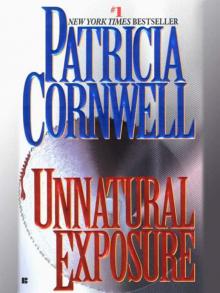 Unnatural Exposure
Unnatural Exposure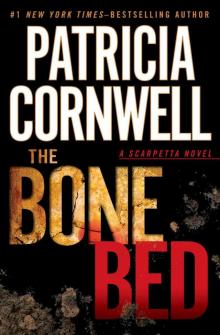 The Bone Bed
The Bone Bed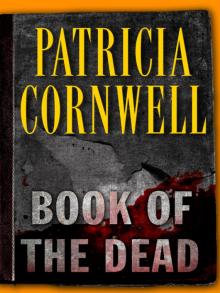 Book of the Dead
Book of the Dead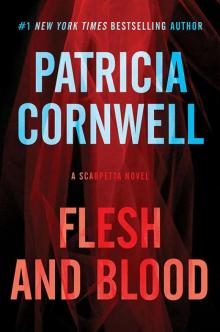 Flesh and Blood: A Scarpetta Novel (Scarpetta Novels Book 22)
Flesh and Blood: A Scarpetta Novel (Scarpetta Novels Book 22)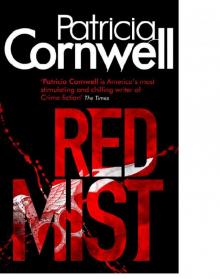 Red Mist
Red Mist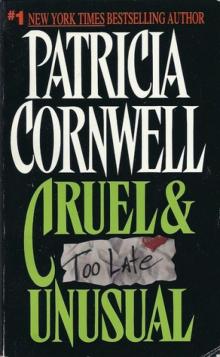 Cruel & Unusual
Cruel & Unusual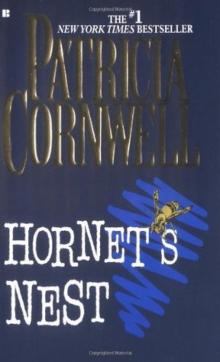 Hornet's Nest
Hornet's Nest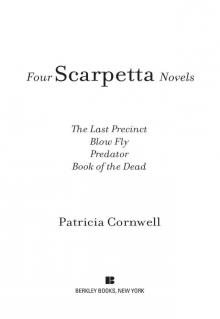 Four Scarpetta Novels
Four Scarpetta Novels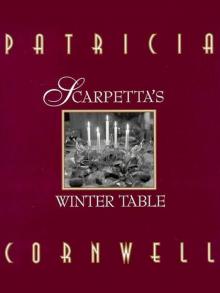 Scarpetta's Winter Table
Scarpetta's Winter Table Isle of Dogs
Isle of Dogs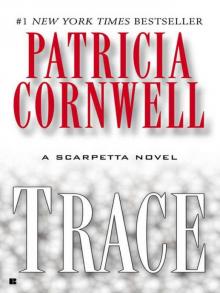 Trace
Trace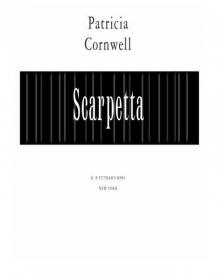 Postmortem
Postmortem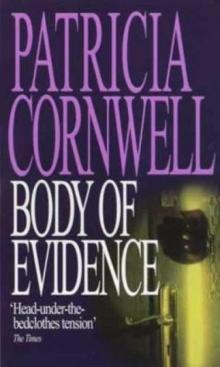 Body of Evidence ks-2
Body of Evidence ks-2 Southern Cross
Southern Cross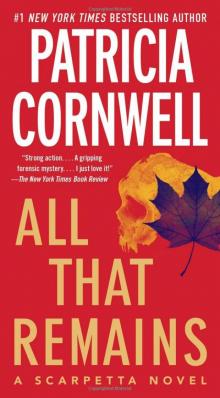 All That Remains
All That Remains Point of Origin
Point of Origin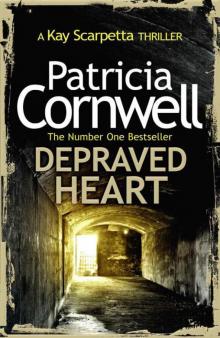 Depraved Heart
Depraved Heart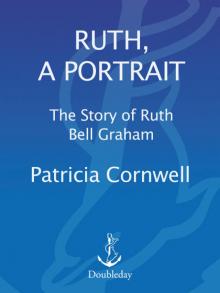 Ruth, a Portrait: The Story of Ruth Bell Graham
Ruth, a Portrait: The Story of Ruth Bell Graham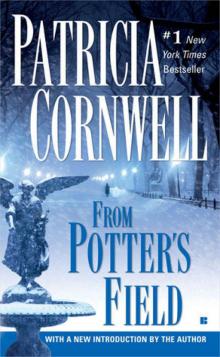 From Potter's Field
From Potter's Field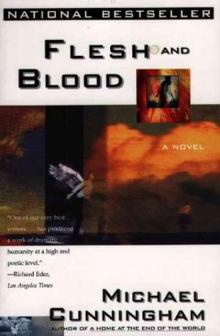 Flesh and Blood
Flesh and Blood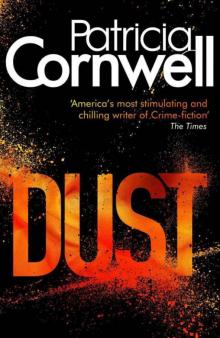 Dust
Dust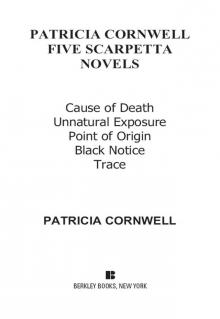 The Body Farm
The Body Farm Port Mortuary
Port Mortuary Quantum
Quantum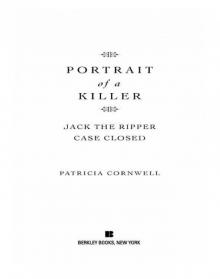 Portrait of a Killer: Jack the Ripper - Case Closed
Portrait of a Killer: Jack the Ripper - Case Closed Spin (Captain Chase)
Spin (Captain Chase)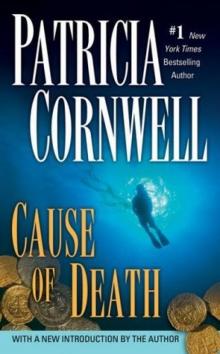 Cause of Death
Cause of Death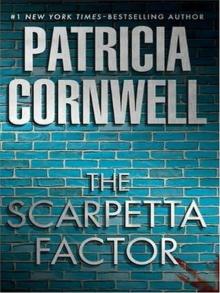 The Scarpetta Factor
The Scarpetta Factor Predator
Predator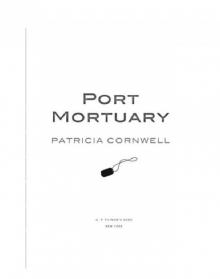 Scarpetta 18 - Port Mortuary
Scarpetta 18 - Port Mortuary Trace ks-13
Trace ks-13 Portrait of a Killer
Portrait of a Killer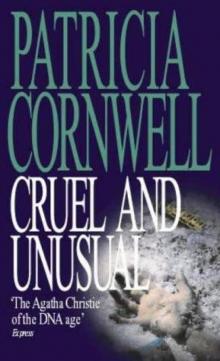 Cruel and Unusual ks-4
Cruel and Unusual ks-4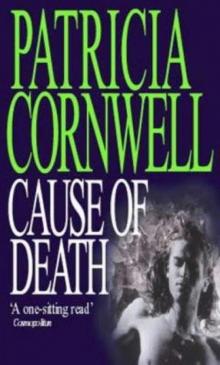 Cause Of Death ks-7
Cause Of Death ks-7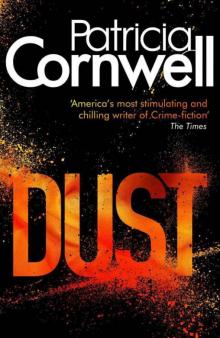 Dust ks-21
Dust ks-21 At Risk wg-1
At Risk wg-1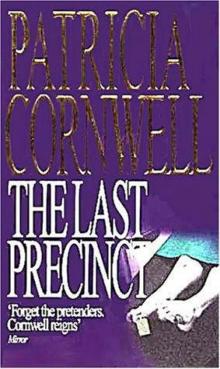 The Last Precinct ks-11
The Last Precinct ks-11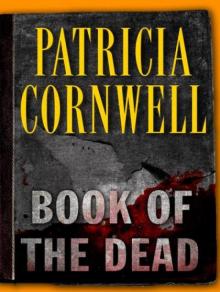 Book of the Dead ks-15
Book of the Dead ks-15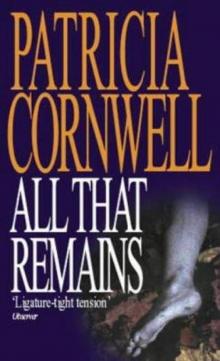 All That Remains ks-3
All That Remains ks-3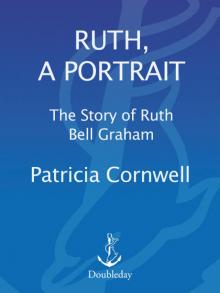 Ruth, a Portrait
Ruth, a Portrait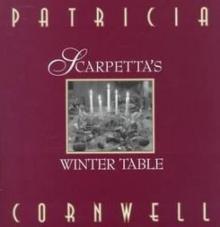 Scarpetta's Winter Table (kay scarpetta)
Scarpetta's Winter Table (kay scarpetta)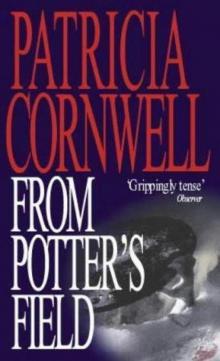 From Potter's Field ks-6
From Potter's Field ks-6 Scarpetta
Scarpetta Isle of Dogs jhabavw-3
Isle of Dogs jhabavw-3 Hornet's Nest jhabavw-1
Hornet's Nest jhabavw-1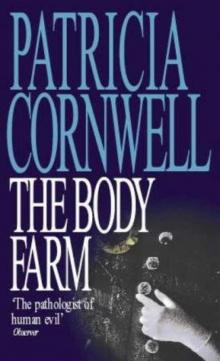 The Body Farm ks-5
The Body Farm ks-5 Blow Fly ks-12
Blow Fly ks-12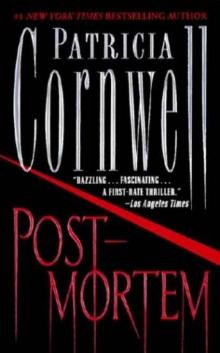 Post Mortem
Post Mortem Five Scarpetta Novels
Five Scarpetta Novels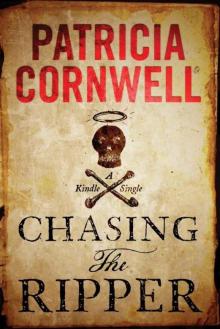 Chasing the Ripper (Kindle Single)
Chasing the Ripper (Kindle Single)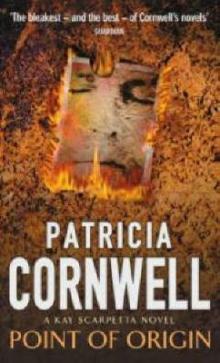 Point of Origin ks-9
Point of Origin ks-9 Port Mortuary (2010)
Port Mortuary (2010)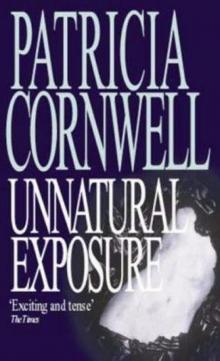 Unnatural Exposure ks-8
Unnatural Exposure ks-8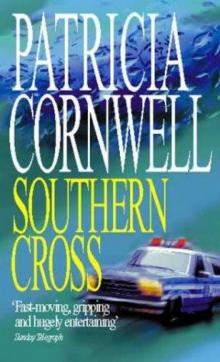 Southern Cross uhabavw-2
Southern Cross uhabavw-2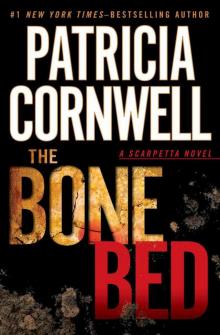 The Bone Bed ks-20
The Bone Bed ks-20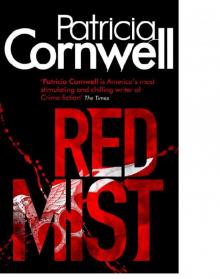 Red Mist ks-19
Red Mist ks-19 Port Mortuary (2010) ks-18
Port Mortuary (2010) ks-18 Predator ks-14
Predator ks-14